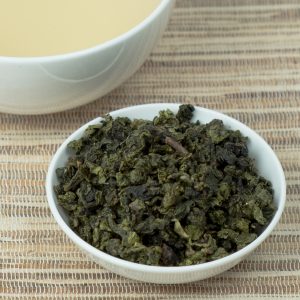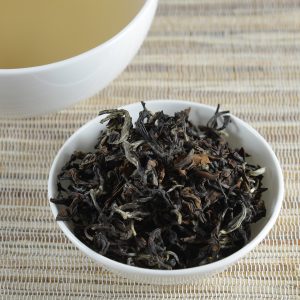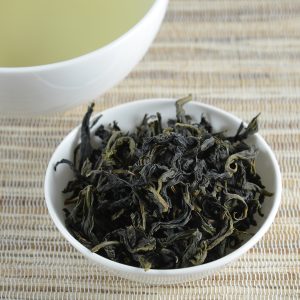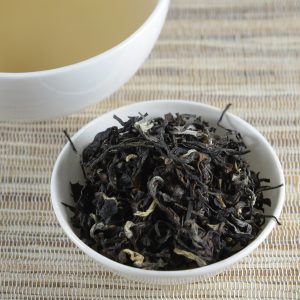Oolong Tea
Taste and origin
Oolong is a semi-oxidized tea, which can be classified between green tea (not oxidized) and black tea (fully oxidized). Its degree of oxidation ranges from 15 to 70%, which brings a great variety in taste. Basically, oolong teas are known for their sweet, delicate and, with a shorter oxidation period, grassy, floral taste. The higher the degree of oxidation, the more reminiscent they are of black tea. The traditional Chinese production of Oolong originated in Fujian, in southeastern China, and spread to Taiwan in the 18th century, from where we source our Formosa Oolong.
Harvesting and processing
For Oolong tea, “two leaves and a bud” are also picked by hand. Here, the leaves may be slightly larger than for green tea, which is why the first harvest does not take place until late April/early May.
After picking, the leaves are laid out on large bamboo plates and wilted in the sun or in well-ventilated rooms, where they already lose a large part of their moisture. They are then crushed by hand to break the cell walls so that the oxidation process can begin. The duration of the crushing and the subsequent oxidation time determine the degree of oxidation. To stop the oxidation, the tea leaves are now fixed with the help of heat (80°C). This so-called kill green is traditionally done in large iron pans. Now the tea leaves are rolled into their characteristic oolong shape. The tea is then dried until it contains a residual moisture of 3%. Some teas are then roasted for a more intense flavor.
Preparation
For the preparation with the Kung Fu method, you need 4g of tea, which you pour over 100ml of hot water (90-100°C) and let it brew for only 10-20 seconds. With this method, up to 8 infusions are possible, each revealing different flavor nuances.
According to the western method, pour 4g of tea over 200ml of hot water (90-100°C) and let it steep for 1-2 minutes. Up to four infusions are possible.
As with all teas, we recommend a thin-walled, white tea cup, which not only brings out the flavor, but also the color nuances of the tea beautifully.








